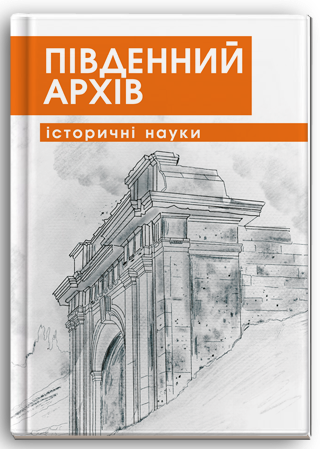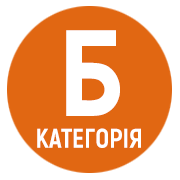CHILDREN DURING THE IRELAND’S GREAT HUNGER OF 1845–1851 AND THE HOLODOMOR OF 1932–1933 IN UKRAINE: A COMPARATIVE ANALYSIS
DOI:
https://doi.org/10.32999/ksu2786-5118/2022-40-1Keywords:
Holodomor, Ireland’s Great Hunger, famine, childhood, family history, Ukraine, IrelandAbstract
Purpose – comparison of the situation of children during the Ireland’s Great Hunger (1845–1851) and the Holodomor (1932–1933): threats, survival practices, consequences. Research methods. The method of comparative analysis was used during the research. The main points of comparison were: the mortality rate from hunger and associated diseases and methods of its calculation; consequences of famines – impact of famine on childhood: crisis of family relations, crime and destructive factors; survival practices: survival skills, help, mutual aid; commemorative practices. Adhering to the principle of historicism, the context of historical eras against which the events of the Great Famine in Ireland and the Holodomor in Ukraine unfolded was investigated. For this, scientific literature covering the events of famines and the topic of childhood during them, archival sources, diaries and memories of eyewitnesses were involved. Research results: a comparative analysis of threats, survival practices, consequences of the Ireland’s Great Hunger (1845–1851) and Holodomor (1932–1933) for children and childhood was carried out. Conclusions. The source base for the study of the Ireland’s Great Hunger of 1845–1851 in Ireland and the Holodomor of 1932–1933 in Ukraine is sufficient, but has the potential for development: the identification of new sources, in particular oral history and archeology, the continuation of public involvement in the collection of memories, the formation of electronic databases data and museum exhibits. These measures will help to simultaneously identify new sources and preserve the memory of famines. It was found that the common features were the silence of the famine by its organizers – the governments of Great Britain and the USSR, respectively, which led to the death of a significant number of the population, among which the most vulnerable and the most numerous category of victims were children, as well as the attempts of these colonial states to blame the Irish and Ukrainian peoples for the famine, to justify inhumane policies; the increase in the number of homeless and neglected children due to the fact that their parents leave their children behind when they go to America, Australia (Ireland) and Donbas, Crimea (Ukraine) to earn money. Although it is forbidden for Ukrainians to leave their settlements at this time, this did not stop migration, it only created new risks. A special feature of the Ukrainian realities of the 1930s is the orphan hood of children as a result of repression against their parents, but labor emigration, the basic principles of the workhouses in Ireland also have signs of repression directed against the Irish population, consisting of national and social discrimination, the destruction of the family, hardly, since it is not even possible to talk about the “voluntariness” of the choice in conditions of famine. During the famines in Ireland and Ukraine, a humanitarian crisis is observed. In Ukraine, there are cases of infanticide and cannibalism, which have not become widespread in Ireland. The peculiarity of the loss of moral landmarks lies in the Soviet anti-religious campaign, but if the Irish had at least spiritual consolation in the support of the church, the fate of children who ended up in workhouses was little different from the fate of Ukrainian children who fell under the care of orphanages. It was these institutions that literally became the last refuge for many children. The hopeless situation leads to the cruel exploitation of child labor and the spread of crimes against children, the growth of child crime. A special feature of Soviet social policy was the destruction of family values: children were used to organize famines, and they were called to report on their parents. A common feature was the inability of parents to protect their children in conditions of famine and preserve family relations. We can talk about the importance of not only material, but also moral assistance to children and families who find themselves in difficult situations.
References
Cusack Christopher. Children and the Great Hunger: old and new perspectives on the Famine. 2018. URL: https://www.irishtimes.com/culture/books/children-and-the-great-hunger-old-and-new-perspectives-on-thefamine-1.3587164 (дата звернення: 01.12.2022).
Geber Jonny. Burying the Famine dead: Kilkenny Union Workhouse in book: Atlas of the Great Irish Famine, Publisher: Cork University Press / Editors: John Crowley, William J. Smyth, Mike Murphy. 2012. Р. 341–348.
URL: https://www.researchgate.net/publication/287508719_Burying_the_Famine_dead_Kilkenny_Union_Workhouse (дата звернення: 01.12.2022).
Гогохія Н. Праця, навчання та дозвілля у житті дитини в УРСР (1929–1939). Проблеми історії України: факти, судження пошуки. Київ : Інститут історії України НАН України, 2011. Вип. 20. С. 255–268.
Голодомор в Україні: Одеська область (1921–1923, 1932–1933, 1946–1947 рр.) Спогади, документи, дослідження. 2008. URL: https://old.archives.gov.ua/Sections/Famine/Publicat/Fam-Odesa-1932-33. php#nom-60 (дата звернення: 01.12.2022).
Державний архів Херсонської області. Ф.П-116 Генічеський районний комітет КП(б) України, 1924–1941, 1943–1991, оп. 1, спр. 125 Лист завідуючого інформаційним сектором оргінструктора КК Дніпропетровського КП(б)У Стасюка всім РПК, 04.01–22.12.1933.
Державний архів Херсонської області. Ф.Р-314 Виконавчий комітет Тягинської сільської ради депутатів трудящих, 1922–1933, 1944–1970 рр., оп. 1, спр. 159. Статистичні звіти про стан колективізації, сільського господарства, тваринництва, 01.01.1933–31.12.1933.
Державний архів Херсонської області. Ф.Р-4093 Документи з історії Голодомору 1932–1933, 1946–1947 років на Херсонщині, 2008, оп. 2, спр. 5.
Державний архів Херсонської області. Ф.Р-4093, оп. 2, спр. 1. Документи (інформації, аналітичні довідки, відомості, листування, фото) про збір свідчень очевидців голодомору та видання Книги Пам’яті України. 38 арк.
Закон України «Про Голодомор 1932–1933 років в Україні». 2006. URL: https://zakon.rada.gov.ua/laws/show/376-16 (дата звернення: 01.12.2022).
Єдиний реєстр жертв Голодомору. URL: https://holodomormuseum.org.ua/iedynyj-reiestr-zhertv-holodomoru/(дата звернення: 01.12.2022).
Kinealy Christine, King Jason and Moran Gerard (eds). Children and the Great Hunger in Ireland. Cork : Cork University Press, 2018. 328 р.
Кісь Оксана. «Українські жінки в умовах Голодомору: безправність vs дієздатність». Ґендер у деталях. 2018. URL: https://genderindetail.org.ua/library/istoriya-i-pamyat/ukrainski-zhinki-v-umovah-golodomorubezpravnist-vs-diezdatnist-134820.html (дата звернення: 01.12.2022).
Kuzovova N. Childhood during the Holodomor 1932–1933 in Ukraine (in the South of Ukraine). Journal of Family History. 2022. 47(1). Р. 59–77. URL: https://doi.org/10.1177/03631990211020339 (дата звернення: 01.12.2022).
Le Typhus de 1847, in The Typhus of 1847. Virtual Archive Annals of the Grey Nuns, Ancien Journal, volume II, 1847. (First Published and Serialized in French, Anon. “Le Typhus de 1847”, Revue Canadienne, 1898–99). / Project Leader: Dr. Jason King Project Translator: Philip O’Gorman. URL: http://faminearchive.nuigalway.ie/docs/grey-nuns/TheTyphusof1847.pdf (дата звернення: 01.12.2022).
Національна книга пам’яті жертв Голодомору 1932–1933 років в Україні. Херсонська область. Херсон : Наддніпрянська правда. 2008. 843 с.
Noack C., Janssen L., Comerford V. (Eds.). Holodomor and Gorta Mór: Histories, Memories and Representations of Famine in Ukraine and Ireland. Anthem Press. 2012. 288 р. DOI: 10.7135/UPO9780857282231.
Ó Gráda Cormac. Black’47 and Beyond: The Great Irish Famine in History. Economy and Memory. New Jersey : Princeton University Press, 2000.
Райони УСРР. Т. 1: Статистичний довідник / за ред. О.М. Асаткіна. Управління народногосподарського обліку УСРР, Київ : Вид-во «Народне господарство та облік», 1936. 1245 с.
Rudnitskyi O., Levchuk N., Wolowyna O. Demography of a man-made human catastrophe: the case of massive famine in Ukraine 1932–1933. Canadian Studies in Population. 2015. 42. No. 1–2. Р. 53–80.
Slavin P. Climate and Famines: a Historical Reassessment. Wiley Interdisciplinary Reviews: Climate Change. 2016. 7 (3). Р. 433–447.
Харченко Артем. «…потрібні більш кваліфіковані робітники»: колективний портрет персоналу сиротинців напередодні Голодомору. Україна Модерна. 2019. URL: https://uamoderna.com/md/kharchenkoorphans (дата звернення: 01.12.2022).
Херсонщина. Голодомор. 1932–1933 : збірник документів. Херсон : «ХМД», 2008. 320 с.



